2023 — Anniversaries of significance in Canada
100th anniversary of the Chinese Immigration Act
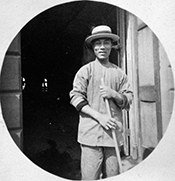
The Chinese Immigration Act of 1923 banned all Chinese immigrants from Canada, effective for 24 years. During this time, immigration into Canada from most countries was controlled or restricted, however people of Chinese descent were singled out for full exclusion. For this reason, the Act is more commonly known as the “Chinese Exclusion Act”. Between 1923 and 1946, it is estimated that only 15 Chinese immigrants gained entry into Canada. Parliament officially repealed the act on May 14, 1947. As a signatory of the United Nations’ Charter of Human Rights, this Act did not respect the principles of the Charter. Chinese immigration to Canada was feasible only after the liberalization of Canadian immigration policy in 1962 and 1967. In 2006, then Prime Minster Stephen Harper issued an official apology to Chinese Canadians on behalf of the Government of Canada.
100th anniversary of the birth of artist Jean-Paul Riopelle

Born October 7, 1923, in Montreal, Jean Paul Riopelle was one of the first Canadian artists to gain major international recognition. From his early studies at the École du meuble under the direction of Paul-Émile Borduas, to his years in Paris where he further developed his style and later his subsequent return to Quebec and reconnecting with nature, Riopelle continued to innovate and experiment, producing a large body of works. His artworks have been presented in major exhibitions around the world. His final exhibition was presented in 1996 at the Musée national des beaux-arts du Québec, where it remains permanently. Jean Paul Riopelle died on March 12, 2002 in L’Isle-aux Grues.
100th anniversary of the signing of the Williams Treaties
In October and November 1923, the Williams Treaties were signed by the governments of Canada and by seven First Nations of the Chippewa of Lake Simcoe and the Mississauga of the north shore of Lake Ontario, covering over 20,000 km2 of land in south central Ontario. The treaty negotiations were a response to nearly a century of complaints that the lands of the Muskoka lakes were not covered by a treaty and that earlier treaties were improperly executed. Named for A.S. Williams, the Government’s lead negotiator, the Williams Treaties provided the Chippewa and Mississauga peoples with a one-time cash payment to settle their claims. In the decades since the signing, disputes about terms, interpretation and implementation of the treaties, especially about the loss of hunting and fishing rights, have continued.
In 1992, the seven Williams Treaties First Nations filed a litigation seeking justice and fair compensation. The claim outlined that Canada did not act honourably when drafting the Williams Treaties by not providing proper compensation and that First Nations’ harvesting rights were unjustly denied. In 2018, the out-of-court settlement was concluded with the First Nations members approving the settlement, along with apologies from both the federal and provincial governments.
125th anniversary of the creation of the Yukon Territory
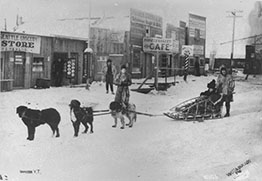
On June 13, 1898, Yukon became the second territory to join Confederation. Originally a district of the Northwest Territories, the discovery of gold at Rabbit Creek in 1896 (later renamed Bonanza Creek) resulted in the federal government seeking stronger control over the region. The Yukon Act effectively put Yukon on a fast-track towards provincehood, however, the end of the gold rush resulted in a reversion to territorial status. Moreover, the Act did not include land treaties with the First Nations people in Yukon, and with 14 Yukon First Nations, their traditional territories cover most of the land in Yukon. In 2003, the Yukon Act was amended after negotiations between the federal government, the Government of Yukon and the Council of Yukon First Nations, which included the transferring of land and resources control to the territory.
150th anniversary of the signing of Treaty 3

On October 3, 1873, the Saulteaux Tribe of the Ojibwe Nation and the Government of Canada signed Treaty 3, also known as the Northwest Angle Treaty. This agreement provided the federal government access to 89,000 km2 of Saulteaux territory in what is now northwestern Ontario and eastern Manitoba. The negotiations for Treaty 3 were the second attempt at concluding an agreement for the lands between the Lake Superior and Red River watersheds. The Government’s negotiators offered more generous terms than in previous treaties, such as hunting and fishing rights, larger reserve lands and agricultural benefits in order to convince the Anishinaabe to agree to the treaty. Treaty 3 would become the model for future treaties across western Canada.
Treaty 3 is also significant as there exists a written record of the Indigenous understanding of the treaty. This is known as the Paypom Document. It is a series of notes that were written for Chief Powassin during the treaty negotiations and documents the promises that were made. The promises in the Paypom Document differ in a number of ways from the printed version available from the Canadian government.
Today, Grand Council Treaty #3 represents 28 First Nations communities, including 26 in northwestern Ontario and two in southeastern Manitoba.
150th anniversary of Prince Edward Island joining Confederation
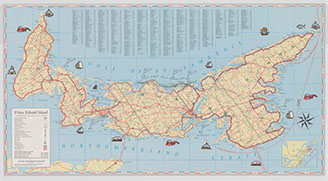
On July 1, 1873, Prince Edward Island (PEI) joined Confederation as Canada’s 8th province. The first inhabitants of the Island were ancestors of the Mi’kmaq, where today the PEI Mi’kmaq communities include the Lennox Island First Nations and the Abegweit First Nation.
Although the first recorded European to visit the island was Jacques Cartier in 1534, permanent settlement did not occur until the early eighteenth century. The first settlement, then known as Île St-Jean, was developed in the 1720s. While Prince Edward Island hosted the Charlottetown Conference of 1864, representatives from Canada failed to capture the support of Islanders who were faced with a massive debt incurred by the building of a railway. The Island did not join Confederation until 1873. Today, Prince Edward Island is the smallest province, both by size and by population. The backbone of its economy is farming, producing over 25% of Canada’s potatoes.
75th anniversary of the United Nations Universal Declaration of Human Rights
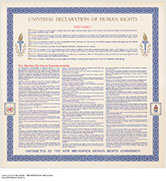
Ratified on December 10, 1948, the United Nations Universal Declaration of Human Rights is an international document adopted by The United Nations General Assembly (UN) that enshrines the rights and freedoms of all human beings. It consists of 30 articles detailing the basic rights and fundamental freedoms of Man, while affirming that it is applicable to all peoples and human beings. Today, 192 members states of the UN have signed on to respect this declaration.
70th anniversary of the Korean War Armistice

On July 27, 1953, the Korean Armistice Agreement was signed in Panmunjom, Korea, bringing three years of fighting to an end. During this period, over 26,000 Canadians served and fought in the Korean War, 516 Canadians lost their lives and hundreds more were wounded. After the signing of the Armistice agreement, 7,000 Canadian troops remained in South Korea in a peace support role, as well as helping with reconstruction, logistics and security. The last Canadian military force departed in 1957. While the agreement did not end the conflict, a demilitarized zone was established, which to this day remains between North and South Korea.
150th anniversary of the Royal Canadian Mounted Police (RCMP)
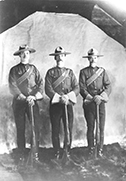
2023 marks the 150th anniversary of the Royal Canadian Mounted Police (RCMP), from its initial roots in the formation of the North-West Mounted Police to the present-day police service. May 23, 1873 is recognized as the birth date of the organization, through an Act of Parliament to establish “a Mounted Police Force for the North-West Territories” after the transfer in 1870 of the former Rupert’s Land from the Hudson’s Bay Company. The organization became the RCMP in 1920 through the amalgamation of the Dominion Police and the Royal North-West Mounted Police. Today, the RCMP continues to have a role in maintaining the safety of Canadians in communities from coast-to-coast-to-coast and the security of Canada through international policing and peacekeeping.